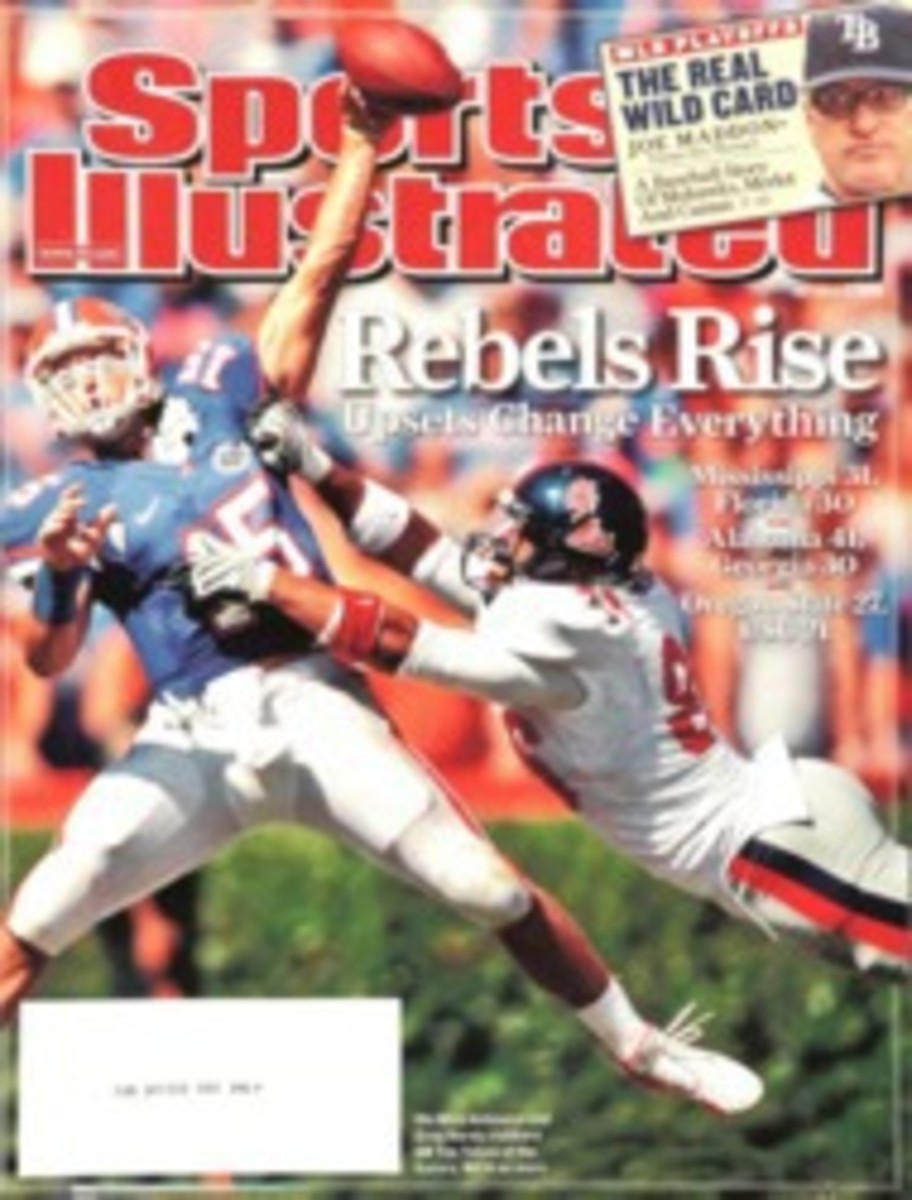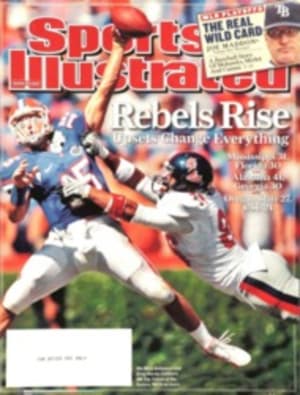
Shea No More
IN CASE youmissed it, and many have, Shea Stadium, the big leagues' fifth-oldest ballpark,is to be leveled this off-season. "Overshadowed by Yankee Stadium? Youcould say that," says Bob Mandt, the Mets' former VP for StadiumOperations, who has worked at Shea since its inception. "That's how it is.It hurts sometimes, but we're used to it."
The twin killingsare coincidental, though the timing is fitting for Shea, defined over its 44years in part as the lesser neighbor to baseball's most hallowed ground.There's no area at Shea to browse plaques of Hall of Famers (the Mets, in anyevent, have just one); no majestic facade; no 26-title tradition. Shea occupiesthree acres of un-prime real estate in the stepsister borough of Queens, N.Y.,smack in the flight path of LaGuardia Airport. ("When I got here," saysMets infielder Damion Easley, "I kept looking up all the time.") Thisis the house that the boys at Carlin-Crimmins construction built, and if Sheacould talk, it would do so in the local vernacular: "Fellas,fuhgeddaboutit. Don't worry 'bout me. I've hadda good run."
A few distinctivefeatures may be preserved when Shea comes down. The mini New York City skylineover the scoreboard; the fat red apple that rises frivolously out of a top hatwhen a Met homers. Yet something important will be lost in the dismantling thatbegins later this month: a place where an identity—in which tentative hopebraces against deep trepidation—was carved.
Shea opened onApril 17, 1964. Usherettes in seersucker suits greeted fans. Guy Lombardo'sband played. The Sporting News reported that "Almost all among the 50,312in attendance ... could be heard to gasp such tributes as 'beautiful,''fantastic,' 'fabulous,' 'miraculous,' 'the best ever.'"
Even then, as thePirates won 4--3, such superlatives for the $28 million stadium seemedexcessive. Yet imagine a desert wanderer describing even a lukewarm glass ofwater. Shea was an oasis for those abandoned when the Giants and the Dodgersbolted for California in 1957, fans weaned on Jackie Robinson and Willie Mayswho had minted the phrase "Wait till next year!" and shouted it everyOctober after the Yankees had won again until, in '55, next year finallyarrived. Though the losing in the early years was prodigious, attendance grew.Shea was "an alternative to the cold, machinelike excellence of theYankees," observed Bill Veeck in '64. From the start, folks liked to say,"I've been a Mets fan all my life."
Shea has wornover the years. Its cantilevered stands and narrow aisles seem outdated, itssight lines poor. Though Shea is painted the deep blue of the Mets' colorscheme, many fans call it, affectionately, "the big purple dump."
"But it'stheir dump," says Mets COO Jeff Wilpon. "It holds theirmemories."
Of this: theMiracle Mets of 1969; the Mets who rallied to the World Series behind relieverTug McGraw's Ya gotta believe! mantra in '73; the '86 Mets, who with anextraordinary revival in Game 6 of the Series (Mookie Wilson, Bill Buckner)seemed to validate that decade's slogan: The Magic Is Back. Shea is wherebaseball held its first game in New York after the 9/11 attacks. Mike Piazzawon it with a home run that sent a ripple through the sport. "The only gamein my career I did not mind losing," says Braves manager Bobby Cox."That night belonged to this place."
The losing hasbeen equally vital to the lore. The Mets are often "Amazin'," anadjective affixed—and meant ironically—by Casey Stengel in the 1960s. At Sheathe past is ever present, in corny slogans, in happy-go-lucky Mr. Met walkingthe stands. There's no pretense. Winning is regarded not as a given but agift.
Shea has hostedothers of course. The Jets were tenants from 1964 through '83; Joe Namath'sSuper Bowl III team sprang from Shea. The Beatles came in '65, playing a30-minute set before 55,000 crazed fans. "Oh, that was wild," says PeteFlynn, a groundskeeper who drove the band out of the stadium. When PaulMcCartney returned to Shea this July, to play at Billy Joel's farewell concert,he needed a ride again, this time to the stage in a golf cart through Shea'sweathered tunnels. Flynn, still working the grounds, still keeping the infieldthree quarters of an inch high, still chalking the base paths, provided thelift. "I told Paul McCartney, 'Welcome back.'"
The new park,Citi Field, opens in April and is designed to evoke Ebbets Field, the Dodgers'old home. Fans will walk through tall archways into the Jackie RobinsonRotunda. The seats will be larger, with more legroom. There'll be fancy foodprepared by star chefs. The building will cost some $800 million. Ticket priceshave soared. "Sure, I'm sorry to see Shea go," says Willie Rodriguez, asheet-metal worker from Bay Shore, Long Island. Rodriguez is 47, born inQueens. He comes to a half-dozen games a year. "We all grew up here. ButI'll go to games in the new place—if I can afford it. I mean, I've been a Metsfan all my life."
PHOTO
CHUCK SOLOMON (STADIUM)
PHOTO
NEIL LEIFER (NAMATH)
PLAYING THE FIELD Besides the Mets (top, in '69) Shea hosted the Beatles and Namath's Jets.
PHOTO
JOHN IACONO (MR. MET)
[See caption above]
PHOTO
MICHAEL OCHS ARCHIVES/GETTY IMAGES (BEATLES)
[See caption above]
PHOTO
BETTMANN/CORBIS (CELEBRATION)
PHOTO
AP (SIGN MAN)

